《信息技术与竞争优势 英文版》
| 作者 | (美)杰克 D.卡隆(Jack D.Callon)著 编者 |
|---|---|
| 出版 | 北京:机械工业出版社 |
| 参考页数 | 374 |
| 出版时间 | 1998(求助前请核对) 目录预览 |
| ISBN号 | 7111065689 — 求助条款 |
| PDF编号 | 87479688(仅供预览,未存储实际文件) |
| 求助格式 | 扫描PDF(若分多册发行,每次仅能受理1册) |
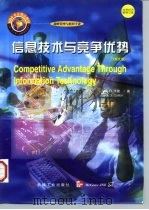
CHAPTER 1Business and Information Systems Management Challenges1
It Is Not Getting Any Easier to Run a Successful Business2
Business Success Factors2
Business Leadership3
Ability to Fit the Pieces into the Increasingly Bigger Business Picture3
Organizational Responsiveness and Resilience4
Solving Customer Problems Through a Combined Organizational Effort4
A Strong Company Culture4
Ability and Willingness to Innovate, Change and Take Risks4
Accomplishing These Factors While Maintaining a Balance5
Communication Across the Entire Organization5
Three Necessary Perspectives5
Simultaneous Revolutions in the Business Environment6
A Business Driver Model7
Market8
Technology8
Regulation8
Employees and Work9
Innovative Use of Information Systems Requires a Systematic Approach9
What is the Point(Objective)of lnformation Systems?11
Examples of Successful Use of Information Systems to Compete12
Boeing12
Wal-Mart Stores13
Bissett Nursery Corporation14
Federal Express15
Charles Schwab15
USAA16
L.L. Bean16
Progressive Corporation17
A Quick Information Systems Assessment17
The Best Industries at Using Information Systems to Compete18
Conclusion19
Recommended Reading19
EXerciSes20
SECTION ITHE FIRST OF THREE PERSPECTIVES:THE BUSINESS ENVIRONMENT23
CHAPTER 2Business Competitive Environment24
Defining Competitiveness and a Competitive Model25
A Competitive Model27
Who is Going to Make it Happen?27
How Does a Company Gain a Competitive Advantage?27
The Competitive Advantage of Nations28
The Nation and Local Processes29
Disagreement on the Role of the Nation31
The Company Agenda31
The Role of Government32
Conclusion32
Recommended Reading33
Exercises34
CHAPTER 3The Porter Competitive Model for Industry Structure Analysis36
The Porter Competitive Model37
An Analysis of Wal-Mart Using the Porter Competitive Model39
Intraindustry Rivalry39
Bargaining Power of Buyers41
Bargaining Power of Suppliers41
Threat of New Entrants41
Threat of Substitute Products or Services42
Industry Structure and the Company Position42
Computer Industry Analysis42
The Strategic Business Unit and Competitive Strategies45
Differentiation Strategy45
Low-Cost Strategy46
Supporting Strategies46
The Value Chain and Competitive Advantage47
Using the Value Chain to Summarize Potential for information Technology50
Conclusion51
Recommended Reading52
Exercises53
CHAPTER 4Airline Industry Analysis55
The Airline Industry and American Airlines56
American's Plans to Increase Profits57
Causes of Poor Airline Profits58
Major Lessons of the Consistently Profitable Carriers60
Singapore.Airlines60
British Airways64
Southwest Airlines65
Airline Industry Analysis Using the Porter Competitive Model67
Intraindustry Rivalry67
Buyers(Customers)70
Suppliers71
New Entrants72
Substitute Products or Services72
Importance of information Technology73
Benefits of information Systems to American Airlines73
Airline Reservation Systems:A Changing Competitive Resource?75
The Airline Industry:Deregulated but Still Very Regulated76
Conclusion77
Recommended Reading78
Exercises79
CHAPTER 5Information Systems Can Redefine Competitive Boundaries81
Networks Cross Company Boundaries to Reap Benefits82
Efficiency from Interorganizational Systems82
Effectiveness from Interorganizational Systems83
Competitive Advantage Through Better Customer Service with Interorganizational Systems83
Competitive Advantage Through Strategic Alliances and Interorganizational Systems84
Company Examples of interorganizational Systems85
Payment Process Industry86
Alliances Provide Growth Opportunities87
Globalization88
Global,International or Interdependent?89
Electronic Data Interchange (EDI)89
Successful EDI Systems Are Logical Extensions of Existing Systems90
EDI Implementation Obstacles91
EDI Value-Added Network (VAN)Services93
EDI at Mervyn's94
E-Mai1-Enabled Applications95
The Internet96
Conclusion96
Recommended Reading96
Exercises98
SECTION IITHE SECOND PERSPECTIVE:THE COMPANY ENVIRONMENT99
CHAPTER 6Business Vision101
What is a Vision?102
A Leader with a Vision at USAA103
Customer Service is the Vision Driver105
Employees Make a Vision Happen105
Vision 2000:Evolution to a FinancIal Services Organization106
USAA Uses Prototyping to Build New Information Systems108
The Role and Contribution of Information Systems111
Summary of USAA's Success112
Whirlpool Corporation:The World's Largest Manufacturer and Marketer of Major Home Appliances113
A Global Vision115
Why Did Whirlpool Pursue a Global Strategy?115
Implementation of the Global Strategy116
The Role of Information Systems in Global Business Strategies118
Challenges to Realizing the Global Vision120
The Global Large-Appliance Industry in 2005?121
Why a Vision?121
The Vision Process123
A Logical Action Plan123
Conclusion124
Recommended Reading124
Exercises126
CHAPTER 7Implementing a Vision:Strategy,Tactics and Business Plan127
Progressive Corporation's Strategies Fit its Name128
Information Systems Support of the Business Strategies130
Summary of Progressive Corporation132
Components and Issues Relating to a New Business Strategy132
Strategic Management Process134
Strategy-to-Tactics Implementation136
The Issue of Control138
The Business Plan139
Information Technology-Based Strategies139
Significant Structural Change to the Marketplace140
Significant Structural Change to Operations140
Redefining Traditional Products and Processes for the Marketplace141
Redefining Traditional Operational Processes141
An Information-Oriented Infrastructure is Key to a Responsive Competitive Strategy142
Data Management142
User Applications143
Voice Management143
Network Management143
Planning Process143
Financial Strategy and Organization143
Moving from Plan to Action144
Conclusion144
Recommended Reading144
Exercises146
SECTION IIITHE THIRD PERSPECTIVE:THE USE OF INFORMATION SYSTEMS147
CHAPTER 8Evaluating Business Strategies and the Use of Information Systems:The Strategic Option Generator149
Strategic Option Generator150
Strategic Targets151
Thrust152
Mode:Offensive or Defensive?153
Direction153
Execution154
Analyzing Federal Express Using the Strategic Option Generator154
Analyzing UPS Using the Strategic Option Generator156
Conclusion157
Recommended Reading158
Exercises158
CHAPTER 9The Roles,Roles and Relationships Concept159
Using Information Systems to Compete Dictates an Essential Partnership160
Roles,Roles and Relationships161
The Role of the Senior Executive161
The Role of Other Senior Management (Managers of Major Business Functions)162
The Role of the is Executive and the is Organization162
The Role of Users of Information Systems162
Relationships163
Technology Transfer Through Organizational Learning164
Phases of Information Systems Management166
Direction166
Conceptual Approach166
Specific Approach167
Making Things Happen:Capitalizing on Information Systems Opportunity167
Threat to the Business(Crisis Management)168
Personal Power168
Improvement of Business Practices168
Summary of the Three Options169
A Road Map to Business Success169
Leadership Phases169
The is Organization as a Business Within a Business170
Does the is Organization Fit Within the Business Model?171
Advantages of a Business-Within-a-Business Orientation172
Outsourcing Information Systems173
Company Examples of Outsourcing174
Conclusion175
Recommended Reading175
Exercises176
CHAPTER 10The Redefine/Define Concept and Change Management177
The Redefine/Define Concept178
Redefine/Define the Business179
USA Today:The First National,General-Interest Newspaper180
American Airlines is in Two Primary Businesses181
American President Companies181
Redefine/Define Products or Services182
A Change in Business Strategy at Charles Schwab182
A Change in Products and Services at Banc One183
Redefine/Define Business Processes184
Boeing Redefines its Design Process for the 777185
L.L.Bean. From a Mail Order to an 800-Number Order Process186
The Product and Service Delivery Process187
Change Management:A Major Management Challenge189
IS Change Management at Hewlett-Packard191
A Little Creativity Can Go a Long Way192
Learning from the NUMMI Approach192
A Vehicle for Change:Automating and Informating193
Conclusion193
Recommended Reading194
Exercises195
CHAPTER 11Telecommunications as the Delivery Vehicle197
The Increasingly important Role of Telecommunications198
The Mission of Telecommunications Within an Organization199
The Four Modes of Telecommunications199
Building Telecommunications Networks200
A Profile of Telecommunications User Requirements200
Additional Considerations in Building a Telecommunications Network201
Data Management Continues to Be a Challenge204
Basic Data Management Functions204
Business Criteria for Telecommunications206
Linking Users with Information from Applications on Networks207
A Telecommunications Road Map208
Multi-Vendor and Multi-Product Connectivity208
Information Systems Architecture209
Distributed Systems, Cooperative Processing and Client-Server210
Open Systems and Standards212
Distributed Data Management216
Internet-The Information Superhighway217
What is the Internet?218
Key Players in the Internet World218
How the Internat Got Its Start219
Current Uses of the Internet220
The Future of the Internet220
Integrated Voice-Data Applications222
Groupware-A Major New Era for Computing223
Groupware at UB Networks224
Conclusion225
Internet Glossary225
Recommended Reading225
Exercises229
CHAPTER 12Using Information Systems to Compete:A Success Factor Profile231
The Success Factor Profile232
The Success Factors232
Why So Many Factors?237
Company Success Factor Profiles237
Federal Express Success Factor Profile237
British Airways Success Factor Profile239
Conclusion240
Recommended Reading240
Exercises241
SECTION IVMAJOR INFORMATION SYSTEMS MANAGEMENT ISSUES241
CHAPTER 13Information Systems Organization and Personnel Considerations244
Business Strategy and Organization Drive the Information Systems Organization245
How Effective Are Current Business Organizational Structures?246
A Successful Information Systems Organization249
The Evolution of the Information Systems Organization251
Information Systems Manager Skill Profile252
Difficulty of the Information Systems Manager Job252
To Whom Should the Information Systems Manager Report?253
If the Information Systems Executive Reported to You253
Successful Information Systems Are a Product of Good Working Relationships254
Information Systems Steering Committee255
Functional Interface Managers255
Functional End-User Coordinator256
Service Level Agreements256
User Training and Education256
Application and Technical Consultation257
Joint R(D Projects)257
The Working and Personal Posture of the IS Manager257
Information Systems Personnel Considerations257
The Chief Information Officer259
Information Specialist259
The Importance of Education and Training260
The Future information Systems Organization260
An Information Systems Executive and a CIO261
Client Interface262
General and Administrative262
Information Systems Utility262
Telecommunications263
Conclusion263
Recommended Reading263
Exercises264
CHAPTER 14Information Systems Value and Financial Strategy265
Needed:Better Answers Regarding the Value of Information Systems266
What Is the Basis for Determining Information Systems Value?267
What Is the Average for Information Systems Spending in an Industry?268
High IS Costs Get Senior Management's Attention269
Three Factors in Determining Value269
The Evolution of Information Systems Justification270
Stage I:In the Beginning There Are Budgets270
Stage II:With GroWth Comes the Need for a Business Case270
Stage III: Departments Should Pay for the Is Support They Receive271
Stage IV:Time for a Management Process274
Is There a Best Way to Manage Large IS Expenditures?278
An Alternative: A Cost Accounting System279
Managing Information Systems as Two Concurrent Businesses279
Conclusion280
Recommended Reading280
Exercises282
CHAPTER 15 Integrating Information Systems into the Business Plan283
It All Starts with Business Planning284
Business Drivers Influence Planning284
The Two Major Challenges of Planning286
Strategic Planning287
The True Beneficiaries of Good Business and Is Planning288
What to Plan to Link Information Systems to Business Strategies289
Barriers to Aligning Information Systems with Business Strategies290
Business and Information Systems Planning Framework293
Developing New Strategies and Supporting Them with Information Systems295
Strategic Planning Questions295
Some Planning Guidelines298
Planning Methodologies298
Why Does Business and Information Systems Planning Fail?300
Conclusion301
Recommended Reading302
Exercises303
CHAPTER 16Total Quality Management and the Role of Information Systems305
A Case Analysis:Leadership Through Quality at Xerox306
Leadership Through Quality307
The Original TQM Implementation Plan308
The Role of Information Systems Within Xerox309
An Analysis of Xerox's TQM Program311
Why TQM? The Problems and the Challenges313
Fundamentals of Total Quality Management313
TQM and Reengineering315
To Measure Is to Know: The Role of Information Systems316
Challenges in Implementing a TQM Program318
Some Words from“Mr.Quality” W. Edwards Deming319
Conclusion320
Recommended Reading322
Exercises323
CHAPTER 17Final Considerations324
Organizational Responses to Business Drivers and the Significance of Information Systems325
Business Success and the Role of Information Systems326
Unsuccessful Competitive Information Systems328
Questions to Ask when Contemplating the Use of Information Systems to Gain a Competitive Advantage329
Some Advice Regarding Information Systems Implementation332
Manufacturing System Guidelines332
Conclusion332
Exercises334
Appendix:An Example of an Analysis Paper335
Index363
1998《信息技术与竞争优势 英文版》由于是年代较久的资料都绝版了,几乎不可能购买到实物。如果大家为了学习确实需要,可向博主求助其电子版PDF文件(由(美)杰克 D.卡隆(Jack D.Callon)著 1998 北京:机械工业出版社 出版的版本) 。对合法合规的求助,我会当即受理并将下载地址发送给你。
高度相关资料
-

- 竞争优势
- 1997 北京:华夏出版社
-

- 信息武器与信息战争
- 1997
-
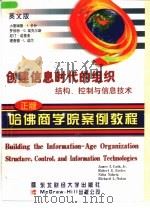
- 创建信息时代的组织 结构、控制与信息技术 英文版
- 1998 沈阳:东北财经大学出版社;McGraw-Hill出版公司
-

- 企业竞争与信息利用
- 1997 北京:书目文献出版社
-

- 信息工作与企业竞争力
- 1997 北京:企业管理出版社
-

- 企业竞争战略与优势
- 1998 北京:中国商业出版社
-
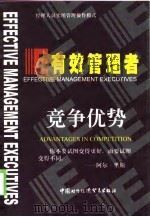
- 竞争优势
- 1998 北京:中国对外经济贸易出版社
-
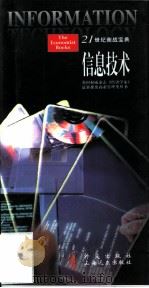
- 信息技术
- 1997 北京:外文出版社;上海:上海远东出版社
-
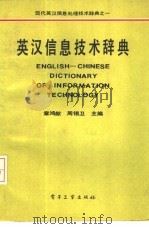
- 英汉信息技术辞典
- 1988 北京:电子工业出版社
-

- 英汉信息技术词汇:中、英文
- 1999 北京:中国大百科全书出版社
-

- 英汉信息技术词汇
- 1994 北京:化学工业出版社
-

- Internet网信息出版技术
- 1997 北京:电子工业出版社
提示:百度云已更名为百度网盘(百度盘),天翼云盘、微盘下载地址……暂未提供。➥ PDF文字可复制化或转WORD


